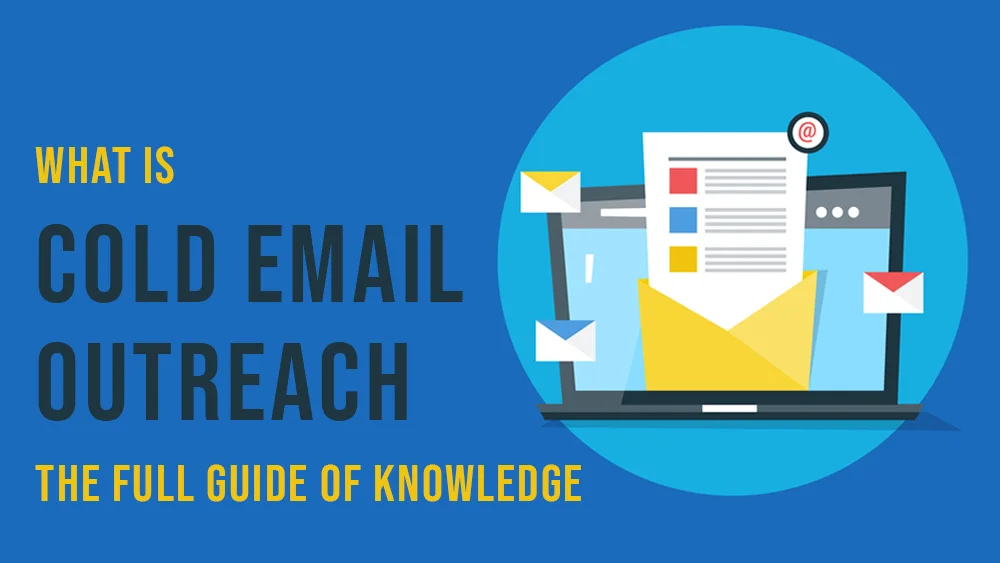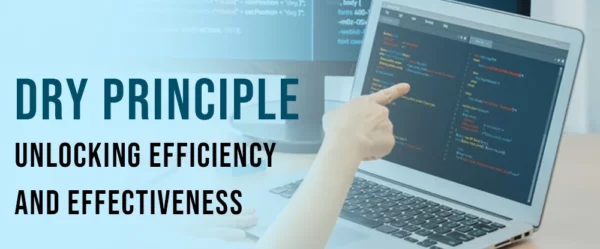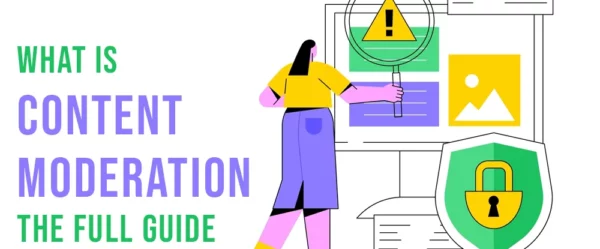The Ultimate Guide to Understanding What is Cold Email Outreach
In today’s ever-changing business environment, successful communication is essential for building important relationships and promoting expansion. Cold email outreach is a meticulous approach that people use in sales, marketing, and networking efforts. That is, to establish communication with customers or suppliers who have not interacted with the sender before. Crafting personalized emails to prospects involves utilizing research and segmentation to target specific demographics or industries.
The main objective of cold email outreach is to create a connection, present products or services, and foster mutually beneficial relationships. With succinct yet engaging messages, senders aim to pique the recipient’s interest, encouraging more interaction or conversation. Effective email outreach demands finesse, consideration for recipients’ time, and commitment to ethical communication practices to achieve favorable results. Below, we will uncover together what cold email outreach is and delve into the depths of this topic.
What is a Cold Email Outreach? A Quick Overview
A cold email is, simply put, a message sent to a recipient with whom the sender has had no prior contact or relationship. Contrary to warm emails, which are typically sent to individuals with whom there has been prior interaction or connection, cold emails are unsolicited and serve as the first point of contact between the sender and the recipient.
These emails serve a variety of purposes, including sales prospecting, job inquiries, networking, and marketing outreach. Creating a successful cold email involves paying close attention to details, customizing the content, and ensuring it is relevant to the recipient to boost engagement.
A Cold Email Outreach Example
Consider a freelance web designer seeking to broaden their clientele. They could consider reaching out via email to a small business owner whose website seems outdated or could use some enhancements. Start the email with a customized salutation, referencing the recipient’s company and showing appreciation for their accomplishments.
The content of the email could emphasize the advantages of a contemporary, easy-to-use website for drawing in customers and boosting revenue. The designer could then provide their services, highlighting their knowledge and past successful projects. Ultimately, the email could end with a courteous invitation for the recipient to book a consultation or peruse their portfolio for further details. Essentially, the aim of the cold email is to build a connection, showcase worth, and kickstart a possible business partnership, all while honoring the recipient’s time and interests.
The Difference Between a Cold Email Outreach Strategy and an Email Marketing Strategy
You can identify an important difference between a cold email outreach strategy and an email marketing strategy. That is through their goals, methods, and intended recipients. Cold email outreach focuses on establishing contact with individuals or businesses. With whom there has been no previous interaction. People frequently use it for activities like sales prospecting, job inquiries, or networking.
You customize and adapt cold emails to individual recipients. With the goal of piquing their interest and starting a dialogue or connection. On the other hand, an email marketing strategy focuses on cultivating current connections and interacting with subscribers who have chosen to receive messages from the sender. Engaging in email marketing campaigns usually includes sending newsletters, promotions, or updates to a list of subscribers who have willingly provided their contact information.
These emails are crafted to deliver value, uphold brand recognition, and encourage customer interaction or sales. Although both approaches involve email communication, cold email outreach is centered on establishing new connections, while email marketing is focused on nurturing and sustaining current relationships. Moreover, cold email outreach typically requires a greater degree of personalization and research to engage recipients who might not know the sender, while email marketing focuses on nurturing relationships over time with consistent and pertinent content.
What is Cold Email Outreach? Mistakes to Avoid When You’re Sending Cold Emails
There are several mistakes that you should avoid when it comes to sending cold emails. These mistakes are ones that could ruin the whole process of your cold email outreach strategy. Here is a list of what you shouldn’t do when you’re about to create a cold email outreach strategy:
Don’t Write Lengthy Emails
Cold emails are all about encouraging the recipient of the email to buy what you have to sell. Not literally, but kind of in a way that hooks the recipient who is reading your email. Additionally, get them to want to know more about the services you offer. Lengthy emails can overwhelm recipients and deter them from engaging with the content. In the fast-paced digital world, people often skim through emails, looking for concise and relevant information.
Lengthy emails may fail to capture the recipient’s attention or convey the intended message effectively. Moreover, they can come across as intrusive or demanding of the recipient’s time. A successful cold email outreach strategy hinges on brevity, clarity, and relevance. Keeping emails concise ensures that the key points are communicated efficiently, increasing the likelihood of engagement and fostering positive relationships with recipients.
Don’t Be Naggy or Pushy
When engaging in cold email outreach, it’s crucial to steer clear of coming across as overly persistent or aggressive to ensure a favorable impression and nurture possible connections. When emails are too ongoing or forceful, recipients may feel alienated or irritated, reducing the chances of meaningful engagement.
Instead of overwhelming potential clients with endless emails or forceful sales pitches, a more successful strategy entails creating personalized and considerate communication. Establishing a connection and showing authentic concern for the recipient’s needs can greatly increase the chances of receiving a favorable reply. By considering the recipient’s preferences and boundaries, cold email outreach efforts can steer clear of coming across as naggy or pushy, resulting in more productive interactions.
Don’t Add a Plain or Complicated CTA; Make It Catchy!
Not including a compelling call to action (CTA) in a cold email outreach strategy can be a critical mistake, leading to lower engagement. Additionally, it diminishes the email’s effectiveness as well. Whether a basic or complex call-to-action, it may not effectively inspire action or engage the recipient as desired. The email would be enhanced by including a clear call-to-action to guide the recipient on how to proceed and the value of further engagement.
In a busy inbox, a compelling call-to-action is crucial for grabbing attention and encouraging the recipient to respond favorably. It should be evident, brief, and pertinent, directing the recipient towards the intended result while igniting interest or enthusiasm. Not including a compelling CTA in the email could lead to it being ignored or disregarded, causing potential missed chances for building relationships or driving conversions during the cold outreach phase.
Don’t Write a Lengthy Subject Line
Failing to create an engaging subject line can be a crucial error in a cold email outreach plan. The subject line is crucial for your email, as it can determine whether the recipient chooses to open and interact with your message. An unoriginal subject line may not grab attention or effectively communicate the value of your email, resulting in low open rates.
Additionally, in missed chances for connection. Make sure to include a captivating subject line in your email to avoid it being ignored or mistaken for spam, which could reduce the impact of your outreach. It is crucial to dedicate time and energy to crafting a captivating subject line in order to enhance the effectiveness and triumph of your cold email outreach plan.
Don’t Use Any Jargon; Make It Simple!
If you use overly complicated terminology in your email, your reader may get bored or uninterested easily. Something that you would like to heed away from. That is why I advise you not to use any jargon and to keep your email simple and straightforward.
This is one of the most common mistakes that cold email conductors usually make. They use words that are overly complicated or sophisticated in order to seem more professional. However, that is not the scenario that you would like to follow when it comes to executing your cold email outreach strategy. A tip from the marketing team wise? Keep your tone of voice friendly, but not overly friendly. Keep it conversational and simple in order to seamlessly deliver your message. You also need to keep in mind email deliverability.
Don’t Make it Overly Friendly
I know how weird this sounds. We all like a friendly tone, right? However, in the case of cold emails, this might not be the best thing to do ever. While maintaining a polite tone in your emails is commendable, authenticity is paramount. Overly forced friendliness can actually push prospects away. Initiating discussions about personal matters like vacations when you’re a stranger can come across as awkward and insincere.
While genuine compliments are appropriate, it’s important to avoid creating discomfort by forcing a sense of artificial camaraderie. Instead, focus on building rapport through genuine interest and meaningful conversation, respecting the boundaries of your professional relationship with the recipient.
Final Thoughts!
understanding what is cold email outreach is something of the essence. Something that will help you create a seamless cold email outreach strategy. This process entails creating customized messages for individual recipients with the goal of generating interest and initiating valuable conversations. Reaching out via email can be a powerful way to create new opportunities for sales, networking, and professional development, as long as it is done with finesse and consideration for the recipient’s time and boundaries.
By utilizing research, personalization, and ethical communication practices, individuals can enhance the effectiveness of their outreach efforts and cultivate mutually beneficial relationships in different areas of business and networking.











